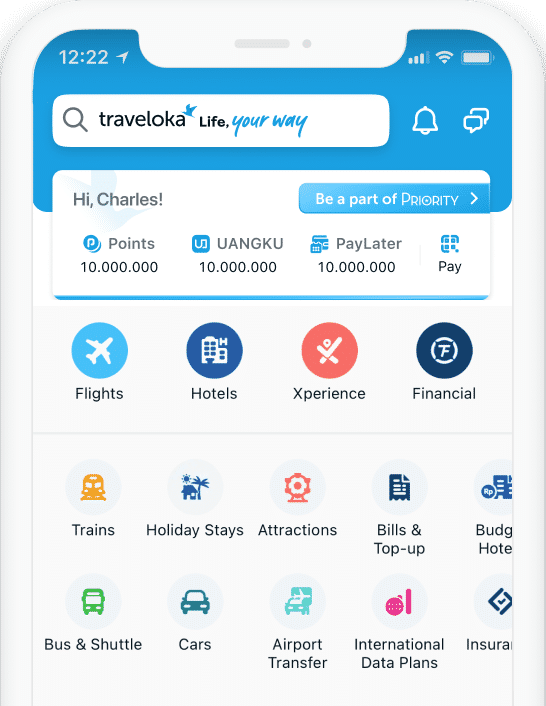
Imus City Hotels
- Hotel/
- Philippines(8505 Hotels)/
- Cavite(293 Hotels)/
- Imus City(3 Hotels)

Why Pay More
When You Can Pay Less?

Popular Hotels in Imus City
Discover what you like
Stay near exciting spots
Plenty of options, whatever your occasion
More about Imus City

There’s more to Cavite than just Tagaytay. Its neighboring districts is steeped in history and has interesting places to explore – like Imus City. Urbanized yet still has the charms of small-town living, it is one of Luzon’s up and coming destinations.
How to Go
By plane
Traveling by plane? Fly to Manila via NAIA Terminals 2, 3, or 4. Then, hop on a taxi and make your way to the Paranaque Integrated Terminal Exchange (PITX), where you can get a ride to Imus. Travel time is approximately one hour via Aguinaldo Highway.
By land transportation
Major transport terminals in Metro Manila such as the PITX and those in Park Square in Makati, SM Mall of Asia in Pasay City, and Lawton in Manila have UV Express shuttles going to and from Imus.
One can take the Coastal Road when driving to Imus.
Getting Around
Since Imus City is highly urbanized, almost all modes of transportation are available. Taxis, jeepneys, and tricycles can take you in and around the city.
Tourist Attractions
Enjoy learning about Imus City and its rich history as you explore its famous tourist spots. Also known as Plaza Licerio Topacio (named after one of the leaders of the Philippine Independence movement), Plaza Imus is the city’s focal point. Within the plaza is Bantayog Monument, built in memory of those who fought during the Philippine Revolution of 1896. The two vintage canons that flank the monument have been there since the 1930s.

Meanwhile, the iconic Imus Cathedral is dedicated to Our Lady of Pilar. Her image was brought to the country from Zaragoza, Spain in 1623. It was enshrined in Intramuros and was transferred to Imus in 1766. Fun Fact: Cardinal Luis Antonio Tagle was bishop of Imus for a decade before becoming the Archbishop of Manila.
Another historical destination in Imus is the Battle Alapan Site . This is where Emilio Aguinaldo fought and won his first military battle against a garrison of Spanish soldiers after being exiled to Hong Kong. It was also where the Philippine flag we know now, sewn by Teodora Agoncillo, was unfurled and raised for the first time.
The Bridge of Isabel II, a two-span stone arch bridge, was the site of the Battle of Imus River that took place in 1896.
Top Things to Do
If you find yourself in Imus, make sure to go on a walking tour. A hotbed for revolutionaries, Imus was witness to many battles fought against Spanish colonial authorities. A walk through the city’s historical landmarks will definitely take you back in time.

Learn more at the Imus Historical Museum, which was once a metal foundry where guns and cannons were forged for the revolutionaries. Painstakingly recreated tableaus will help you appreciate the country’s hard-won freedom.
Where to Eat

Big Ben’s Kitchen Restaurant takes pride in its garlicky Imus longganisa, an heirloom recipe passed on from generation to generations. They also serve Filipino comfort food such as Adobong Tagalog, Kare-Kare, Fiesta Menudo, and Batchoy Tagalog. Bottled gourmet products and frozen meats are also available.
The Black Apartment is a cozy, ‘gram-worthy hangout known for its burgers, hot wings, and milkshakes.
Casa Del Celo is an ancestral house turned restaurant great for Sunday family get-togethers.
Nightlife
Just like its neighboring cities South of Metro Manila, Imus has a laid-back bar scene. Nothing rough and rowdy nor intimidatingly fancy.
Enjoy a round of drinks, bar chow, and live music at iMusix Place KTV, Bar, and Restaurant. Epicenter Party Den has three chill out areas: the Party Den, Richter’s Bar, and Aftershock KTV. Swing by Café Marcello for wine and cocktails while listening to acoustic performances.
Where to Stay
Imus has affordable, low-key resorts for a weekend staycation with the family. There’s Casa Verde Hotel and Boutique Gardens, Moon River Resort, The O Resort, Uno Vera Hotel and Spa, Villabong Resort, and Villa Clarita Private Resort. These are also sought-after venues for team building sessions, private parties, and other special events.
Travel Tips
• Visit Imus in December for Paskuhan sa Imus, a month-long yuletide celebration featuring a trade fair, carnival, fireworks display, concerts, lantern parade, and more.• Imus is where history comes alive so bring the young ones for an out-of-the-classroom learning experience.
Facts about hotel in Imus City
Total Accommodation | 3 Properties |
Popular Hotel | Kalayaan Transient House, Casa Verde Hotel and Events Center |
Popular Landmark | SM Hypermarket Imus, Our Lady of the Pillar Cathedral |
Frequently asked questions

Why book Accommodation in Traveloka?



We’ve got more than just hotels





















 Facebook
Facebook Instagram
Instagram TikTok
TikTok Youtube
Youtube